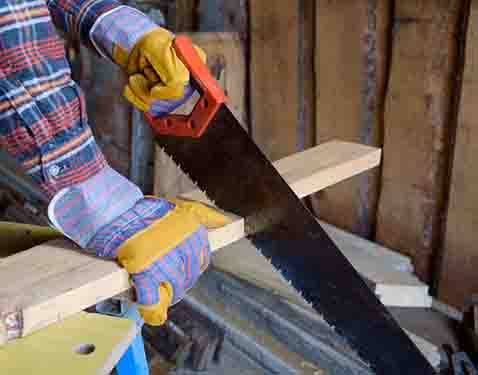
Handsägen: On push and pull – The right saw blade for every cut through wood
Even if hand saws have now almost been superseded by electric saws, there is always work, which can be carried out better and more precisely with the hand saw.
Sawing is the most important and common type of woodworking. Even if almost all cuts can now be made with electric saws – exact, Even the skilled person, who has been practiced for years, can still make fine cuts with a hand saw. To achieve the best possible result, On the one hand, it depends on the choice of the right saw and the right teeth, on the other hand, it also depends on the proper handling of the respective saw. Sawing is a cutting technique. When sawing, a narrow slice of wood is practically cut (Sawdust) and cut out of the board.
So that the saw blade does not get jammed in the kerf, the teeth are set, That means, that the teeth are bent alternately to the right and left. This creates a wider saw joint, than the saw blade is thick. Precision saws, which should leave a joint that is as narrow as possible, have unset teeth. So that this sheet does not get stuck with deeper cuts, you should do it beforehand with wax (with. B. from a candle) or with a special lubricant.
The toothing of the saw blade is decisive for the area in which the saw is used. Hand saws work mainly on buttocks. this means, that the teeth only remove wood, when pushed against the wood. Pull saws are only used for felling or dividing tree trunks. Big pruning saws, that must be operated by two people, have straight teeth, which work in both directions on train.
The blades of saws are made of steel and will rust if not handled properly. A fine fat- or an oil film can prevent this.

For exact, The hand saw is indispensable for fine cuts. Quality saws are sharp and have a long service life, before they need to be sharpened.
As evenly toothed saw blades quickly get stuck in fresh wood, saws with a plane are used for this- or rake teeth.
To cut wood in the direction of the grain, saws with fangs are used. The tips point in the direction of impact and are only ground on the front.
To cut the wood fibers crosswise, saws with triangular teeth are used. All teeth are pointed straight downwards.